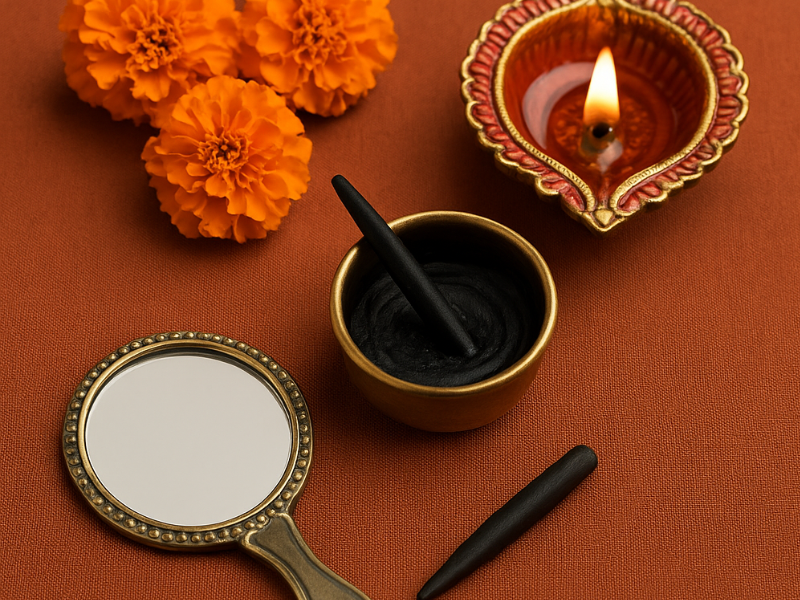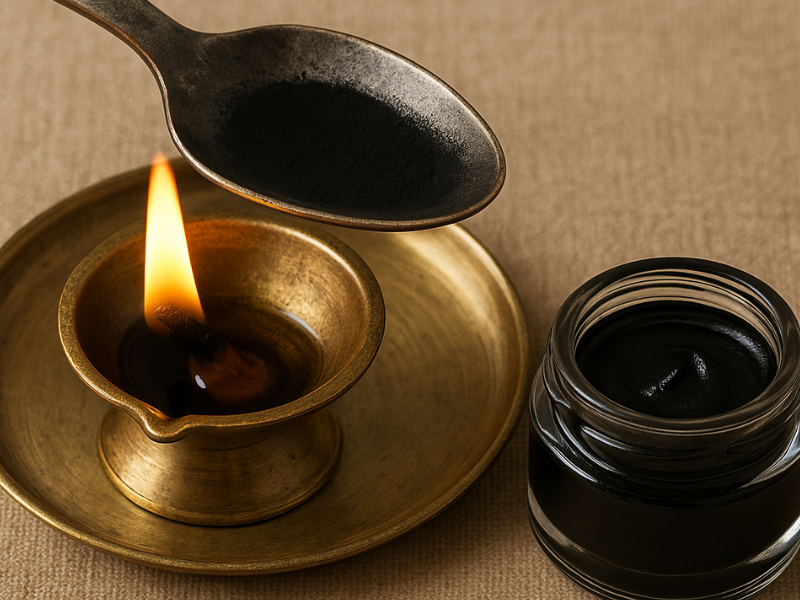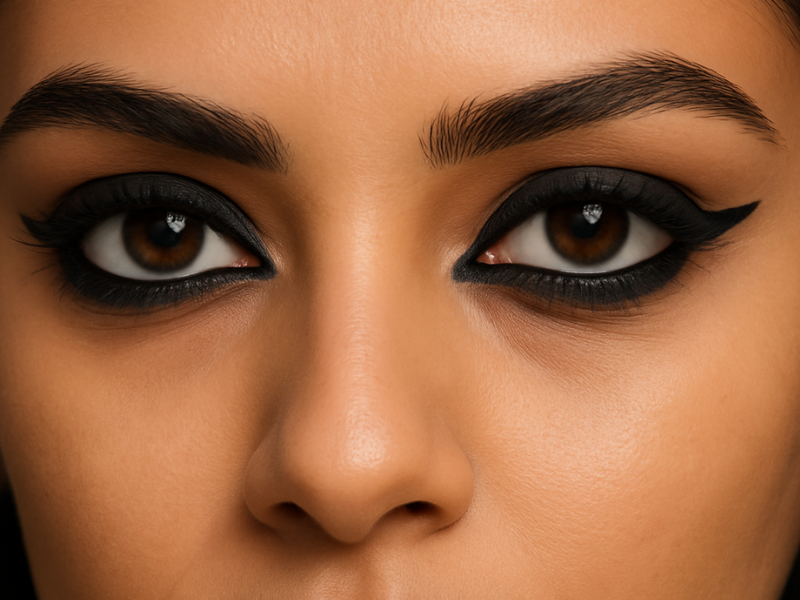Is Kajal Good for Eyes? Let’s Talk About It. Kajal has been an integral part of beauty routines for years. Whether it is the bold kohl lines of Indian brides, the smoky eyes of Middle Eastern traditions, or the subtle waterline strokes in modern makeup, kajal (also known as kohl) highlights the beauty of the eyes.
But beyond simply making you look attractive, there is always one question that everyone has in mind: Is kajal good for your eyes, or does it harm your eyes? Let us go deep into the history, benefits, side effects, and tips for use of kajal with safety. Is Kajal Good for Eyes?
The History and Significance of Kajal
Kajal, or kohl, has been used for so many years. Ancient Egyptians used kohl to give definition to their eyes and protect them from the sun. In India, kajal has long held cultural and traditional importance. Many parents apply kajal to babies, with a belief that:
It protects their eyes from infections.
- Keep the “evil eye” away from the child (a common belief)
- increases the natural beauty of the eyes

Benefits of Kajal for Eyes
Kajal is marketed as a product that not only makes you look beautiful but also protects and cools the eyes. Here are some benefits that traditional and modern users claim:
1. Enhances the Beauty of Eyes
One of the clearest advantages of kajal is the instant sharpness it gives to your eyes. A single stroke can make your eyes appear bigger, sharper, and more expressive.
Smoky or bold look: Perfect for festival makeup or weddings.
Subtle waterline stroke: suggested for daily wear to make your eyes look fresh and bold.
2. Cooling Effect (In Traditional Kajal)
Homemade kajal, usually made with castor oil, ghee, and camphor, is said to have a cooling effect on the eyes. This is why many people use it in the summer to soothe tired eyes.
3. It acts as a barrier against dust.
In regions with hot and dry climates, kajal was believed to protect the eyes from dust and sun glare. This was a reason why it was so famous in the desert regions of Rajasthan and Egypt.
4. Traditional Beliefs for Babies
Though modern doctors do not recommend it, traditionally, applying kajal to babies was thought to:
- Improve their eye strength.
- Protect them from infections.
- Keep them away from the “evil eye”
Is Kajal Good for Eyes? Opinions of the Experts
While kajal has cultural and cosmetic advantages, modern eye specialists have mixed opinions about whether it is truly safe.
1. The Ingredients Matter
Homemade kajal: most probably, it is made with natural ingredients like castor oil, almond oil, and ghee. It is safe if prepared with hygiene.
Commercial kajal: It contains lead, carbon, and preservatives, which can irritate your eyes and even harm eyesight if used more often.
2. Risk of Infections
When kajal is applied on the waterline, it can mix with your tears and can cause bacteria to enter into the eyes, increasing the risk of:
- Conjunctivitis
- Styes
- Irritation and redness
3. Allergic Reactions
Some people may be allergic to chemicals or fragrances in kajal, which is bought from a store, causing:
- Watery eyes
- Burning sensation
- Swelling of eyelids
Common Side Effects of Kajal on Eyes
If not used properly or if the product is not of good quality, kajal can lead to a lot of problems:
Eye Infections—Dirty applicators or expired kajal can cause bacteria.
Blocked Tear Ducts—Thick layers in babies can sometimes block their tear ducts.
Irritation and Redness—Especially if the kajal contains heavy metals or preservatives.
Pigment Spread—Kajal can go inside the inner parts of the eyes, causing blurriness.
Tips to Use Kajal Safely
If you love kajal and don’t want to give it up, here are some simple tips to protect your eyes:
1. Choose a Reupdated Brand
- Look for dermatologically and ophthalmologically tested kajal.
- Avoid products that do not tell about their ingredients.
2. Do not Share your kajal.
- Sharing your kajal can raise the risk of eye infections.
3. Clean Your Eyes Regularly
- Remove kajal before going to sleep to avoid smudging and infection.
- Use a good micellar water or coconut oil.
4. Limit Baby Kajal
- Paediatricians recommend avoiding kajal for babies as their eyes are very sensitive.
- Check for Irritation
- If your eyes feel red or itchy, stop using the product.
Natural and Homemade Kajal
If you want the beauty of kajal without chemicals, try to make it at home:
Ingredients required to make kajal:
- Castor oil or almond oil
- Ghee (clarified butter)
- A cotton damp and a Diya (lamp)
Method:
- Light a diya with the oil and keep a flat metal plate on top of it.
- take the soot from the flame on the plate.
- Mix the soot with some ghee to make a smooth paste.
This traditional kajal is lead-free and can give a natural cooling effect to your eyes.

Kajal in today’s Makeup Trends
Today, kajal is not just a cultural product but a global makeup trend. A lot of international brands launched smudge-proof, waterproof kajals that are safe for daily use.
Popular trends include:
Smoky Eye Look: Kajal applied on the lower lash line.
Tightlining: Applying kajal close to the upper lash line for thicker-looking lashes.
Bold Winged Look: Applying kajal with eyeliner for flirty eyes.

Final Verdict: Is Kajal Good for Eyes?
The answer to this question is both yes and no:
Yes, it is safe if:
- You choose a good-quality or homemade kajal
- You keep your eyes clean and maintain hygiene
- You remove it daily before going to bed
No, it’s not safe if:
- You use cheap, chemical-heavy kajal
- You apply it frequently to babies’ delicate eyes
- You share it with others or pile it on without cleaning your eyes
In short, kajal can enhance your eyes beautifully as long as you use it wisely. Opt for natural or dermatologist-tested options, and you can enjoy its timeless charm without worrying about irritation or infections. Other than enhancing your look, kajal also connects deeply with culture and tradition. For many people, applying kajal is not just about beauty; it is a daily ritual that brings confidence and charm. When it is used safely, it becomes more than makeup—it is a small, timeless expression of self-care.
